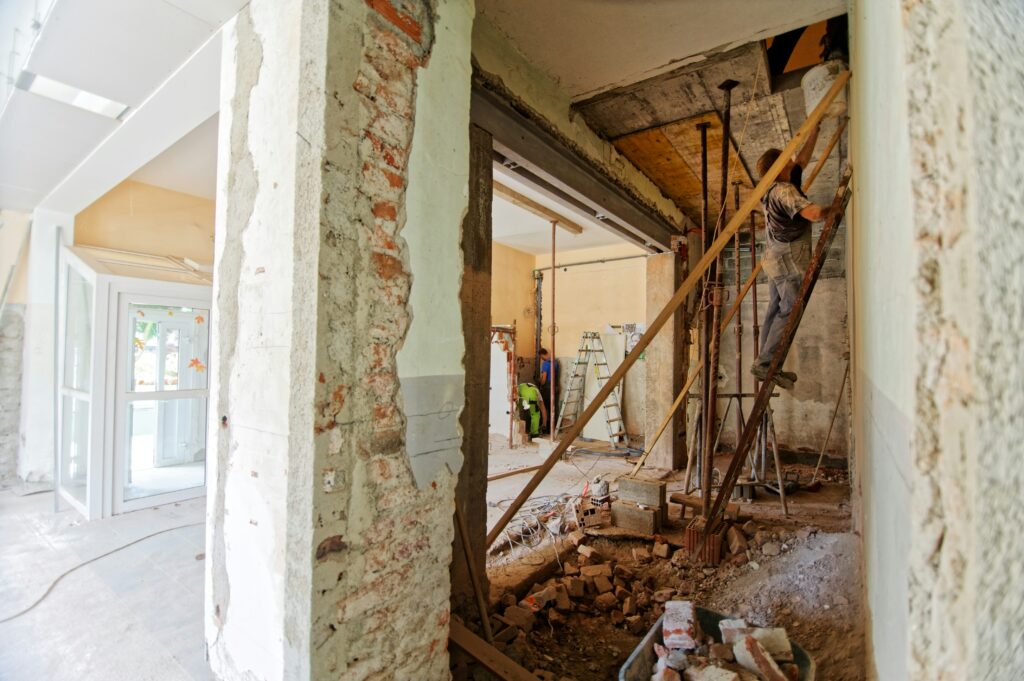Taking on a home building or renovation project is one of the most exciting and rewarding ventures for any new homeowner or DIY enthusiast. It’s your chance to transform a space into exactly what you envision, tailored to your needs and style. But with all the planning, budgeting, and decision-making involved, it can also feel a bit overwhelming.
If you’re venturing into home building and renovation for the first time, you’re in the right place. This guide will walk you through each step of the process—from planning and preparation to the finishing touches. Along the way, you’ll gain insights, tackle challenges, and ultimately feel empowered to bring your dream home to life.
Planning & Preparation
Setting a Budget
One of the first steps in any home building or renovation project is setting a realistic budget. It’s easy to get carried away with lofty ideas, but sticking to a budget will help keep your project on track.
Start by listing all the potential expenses, such as materials, labour, inspections, and permits. Always allocate a contingency fund (around 10–15%) for unexpected costs. Many first-time renovators underestimate how quickly smaller upgrades, like fancy fittings or upgraded paint, can add up! Tools like a home renovation planner can help you lay out estimated costs clearly and efficiently.
Assembling a Team
Not every aspect of home building needs a full team, but deciding when to bring in contractors or professionals is crucial. Consider hiring contractors or specialists for:
- Structural changes
- Plumbing and electrician work
- Roofing and foundation projects
Do your homework before hiring. Ask for references, check reviews, and ensure your chosen professionals are licensed and insured.
Legal Considerations
Before you even begin the actual building process, it’s essential to address local building permits and zoning regulations. Research the requirements for your specific location, as failure to meet legal standards can lead to fines or delays later. If you’re unsure where to start, your local council or a hired contractor will often guide you through getting the right approvals.
Pro Tip: Keep copies of all permits, contracts, and designs stored safely for easy reference.
The Design Phase
Working with Architects and Designers
An architect or interior designer can be your best ally during the design phase. These professionals bring expertise that combines creativity and practicality, ensuring your ideas come to life smoothly.
When choosing an architect or designer:
- Look for portfolios that resonate with your style.
- Ask about their experience with similar projects.
- Clarify pricing (fixed rates versus hourly charges).
Understanding Blueprints
You don’t need to be an expert architect to read blueprints, but understanding the basics goes a long way. Familiarise yourself with symbols for walls, windows, doors, and electrical outlets so you can confidently communicate with your team about any necessary adjustments.
Making Key Design Decisions
This is the exciting part! Choosing materials, colours, and finishes can define the character of your home. Invest in durable, high-quality materials, especially for commonly used areas like flooring, kitchen counters, and bathroom tiles. A well-thought-out design plan also prevents future changes that could cause delays or extra costs.
Pro Tip: Create a “vision board” (either physical or digital) with textures, colours, and inspiration photos to guide your decisions.
Construction & Renovation Phase
Site Preparation
Before construction begins, you’ll need to clear the site of existing debris, prepare the foundation, and ensure any required demolition is completed. Safety is paramount, so ensure the area is secured and follow any guidelines for water and electricity shut offs.
Managing the Project
Staying on top of the timeline and budget during construction can make or break your project.
- Build a detailed timeline with milestones.
- Work closely with contractors to track progress.
- Address delays and challenges early to avoid escalation.
Use tools like project management software to stay organised.
Quality Control
Even if you’ve hired a great team, you’ll want to inspect the progress throughout the process. Regularly monitor the work and ask questions to make sure everything meets expected standards. If something looks off, raise concerns immediately.
Pro Tip: For extra peace of mind, consider hiring an independent inspector to review critical phases of construction.
Finishing Touches
Interior Design
Once the construction wraps up, it’s time for the fun part! When approaching interior design:
- Start with the essentials (furniture, lighting, rugs).
- Layer your decor to create depth and balance.
- Stick to a cohesive colour scheme for a polished look.
Still feeling uncertain? Use a home renovation planner to map out layouts and style choices that align with your preferences.
Landscaping
Don’t overlook curb appeal! A well-designed landscape boosts your home’s aesthetic and value. Consider planting shrubs, adding pathways, or installing a few outdoor lights for a welcoming vibe.
Final Inspection
Before you pop the champagne, conduct a thorough final inspection to ensure everything meets your expectations. Test appliances, check plumbing for leaks, and examine every detail. Create a checklist to ensure no stone is left unturned.
If something doesn’t meet your standards, don’t hesitate to request adjustments. After all, this is your home!
Your Dream Home is Within Reach
Building or renovating a home may seem daunting, but with careful planning, teamwork, and attention to detail, it’s entirely achievable. The key is to break the process into manageable steps and lean on the right resources when needed.
To help you kickstart your project, we’ve curated additional resources to explore design ideas, budgeting tools, and DIY guides. Use them as inspiration to make your dream home a reality.
Whether you’re sketching your ideas for a new kitchen or mapping out landscaping plans, there’s no better time to start than now. Happy building!



